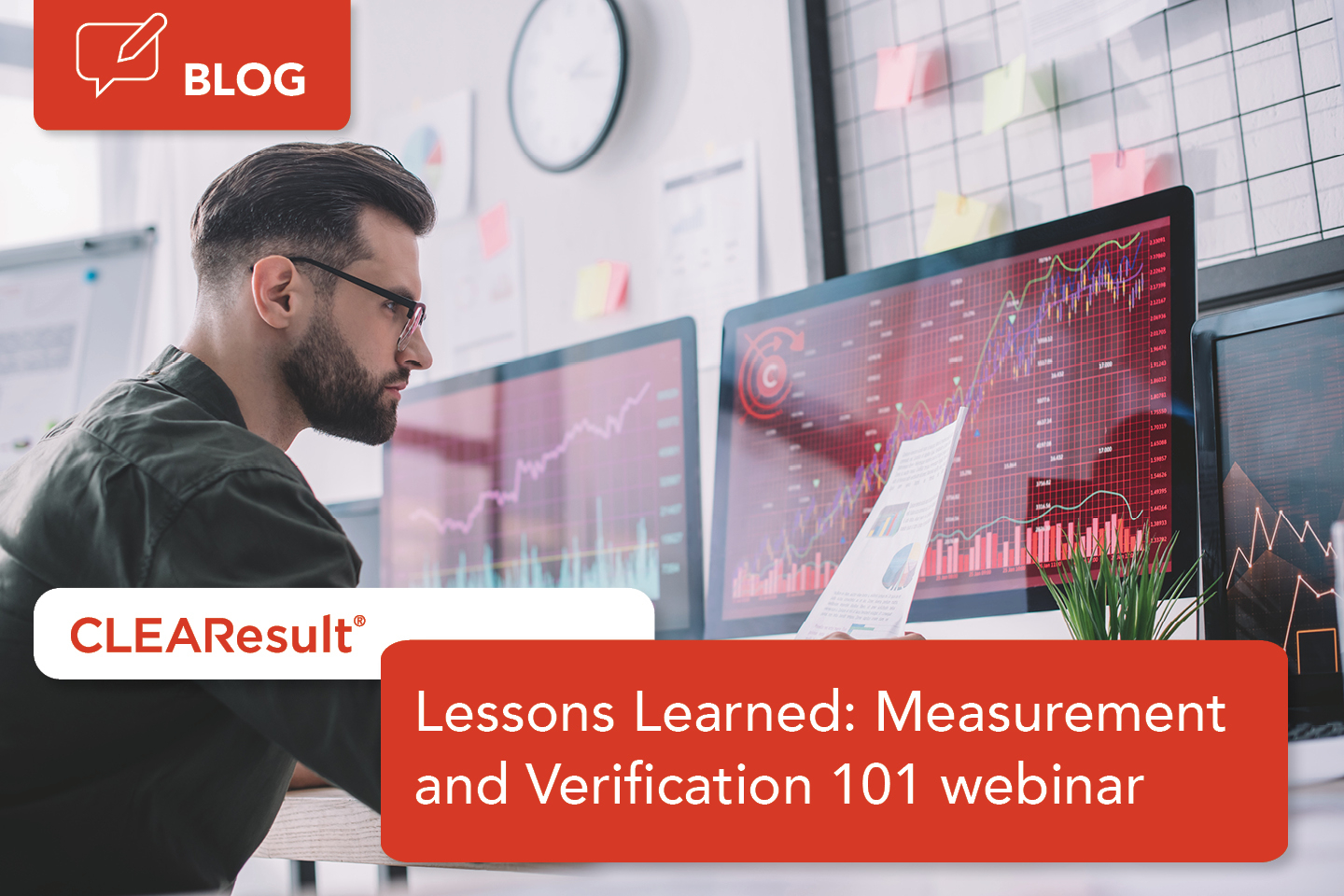What we learned: Key takeaways from our Measurement and Verification 101 webinar

In our client-exclusive Learning Series webinars, subject matter experts from across CLEAResult provide an in-depth and practical perspective on a wide variety of topics relevant to utilities today. As part of this ongoing series, Tim Kennedy, one of our expert energy engineers, shared his insights on measurement and verification (M&V) and how it empowers utilities to quantify the energy savings on specific projects. Here we'll cover some high-level takeaways from this comprehensive training.
What M&V is and why it's important
M&V is a means of quantifying and verifying energy savings on a project. Ideally, all projects will have a calculable standard, but this is not always the case. M&V allows us to account for those projects lacking a predefined calculation standard, including new or innovative technologies. It helps utilities quell any uncertainty over the potential outcome of a project, provide evidence to a third party, and improve facility operation.
Which M&V approach to use
While utilities have various options when it comes to M&V, these are the two high-level approaches we take with our clients as implementers:
- Whole parameter measurement - This monitors all parameters affected by energy conservation measures implemented over a period. This option is suitable when there are numerous changes occurring in the facility during the same implementation period and the savings amount to over 10% of the total facility consumption. Its main advantage is that it takes into consideration the interactive and indirect effects of all the changes in the facility. The time commitment is also low, requiring only a single full cycle of operation.
- Retrofit isolation - This measures one parameter of a given project for a brief period and uses the data gathered to estimate other parameters. This is appropriate when there are not a lot of concurrent changes in the facility and/or when the savings are less than 10% of the total facility consumption. This approach isolates the savings for a retrofit but does not account for interactive effects. It is a low-cost and low-time commitment option.
These approaches are just the starting blocks for M&V. Our training went in-depth on the many options and factors to consider when determining the best approach for a utility's situation. Our expert Tim went on to cover what data to collect for each option and how to analyze that data using regression analysis.
Ensuring M&V success
The webinar also outlined the steps you should take to achieve the best results with M&V.
- Have a M&V plan: M&V plans bring meaning and understanding to the entire process, so all parties can agree on the adjusted baseline, the calculated model, the measures taken, and the expected savings. This is essential to ensure that all stakeholders understand how changes to the plan will affect the confidence level of saving calculations as well as the timeline.
- Conduct evaluations: Evaluations are often essential at the end of the M&V process and determine how accurate the realized savings were compared to the projected. Publicly funded programs are required to have a third party verify that the saving calculations are accurate and have the proper documentation to prove the assumptions.
- Early engagement: The overall success of a program hinges on early engagement with all participants, clients, and third-parties as they all play a crucial role in guiding energy efficiency decisions. Utility-led programs will require the utility’s evaluator and implementer to review the M&V plans and take a united approach. Initial buy-in at the project's outset ensures less risk once completed.
The full M&V webinar is available to CLEAResult clients. If you are a CLEAResult client and missed this learning webinar, please contact us by visiting our Energy Transition page and we’ll be in touch with on-demand options.